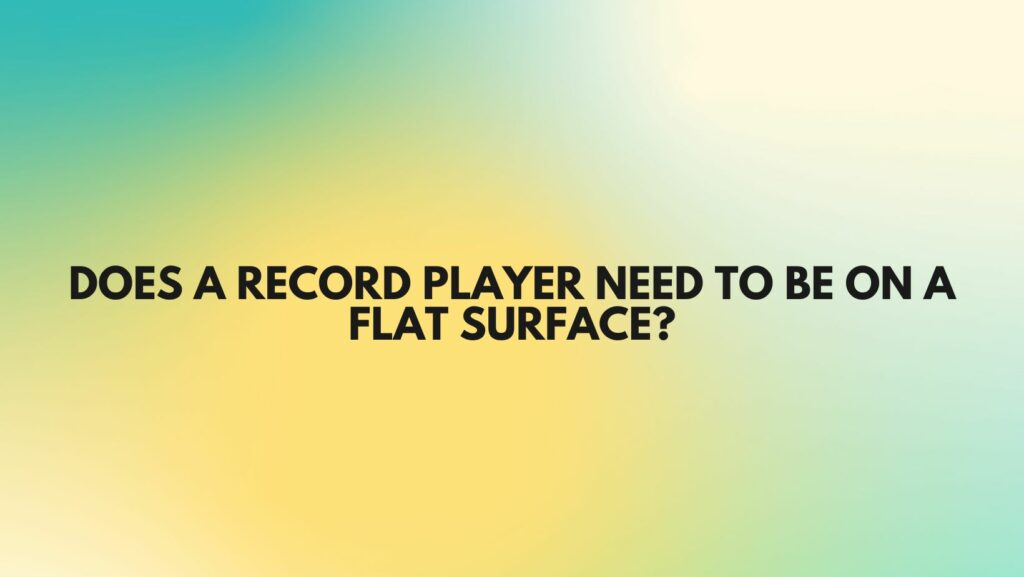Record players, cherished for their ability to reproduce the warm, analog sound of vinyl records, require careful consideration when it comes to placement and stability. Among the considerations is the surface on which the record player rests. In this article, we’ll delve into the importance of stability and whether a record player needs to be on a flat surface, offering insights to help you optimize your vinyl listening experience.
The Role of Stability in Record Player Performance:
- Minimizing Vibrations:
- Record players are sensitive to vibrations, which can distort sound quality and affect playback performance.
- Placing the record player on a flat and stable surface helps minimize vibrations caused by external factors such as foot traffic, speaker vibrations, or nearby appliances.
- Maintaining Speed Accuracy:
- A flat surface provides a stable platform for the turntable platter, ensuring consistent rotation and speed accuracy during playback.
- Uneven surfaces or unstable platforms may cause the turntable to wobble or tilt, leading to speed variations and playback issues.
- Preserving Record and Stylus Alignment:
- Proper alignment of the record and stylus is essential for accurate tracking and minimizing wear on vinyl records.
- Placing the record player on a flat surface helps maintain alignment, ensuring that the stylus tracks the grooves of the record smoothly and evenly.
Factors to Consider When Choosing a Surface:
- Flatness and Leveling:
- The surface on which the record player rests should be flat and level to ensure stability and proper operation.
- Avoid surfaces with uneven or sloping characteristics, as they can compromise the performance and longevity of the record player.
- Material and Construction:
- Consider the material and construction of the surface to provide adequate support and vibration damping.
- Solid materials such as wood, metal, or acrylic are preferred for their stability and resonance-dampening properties.
- Isolation and Protection:
- In addition to flatness, consider using isolation pads or feet to further dampen vibrations and protect the record player from external disturbances.
- Isolation pads can help minimize resonance and improve overall sound quality by isolating the record player from its surroundings.
Conclusion: In conclusion, while it’s not absolutely mandatory for a record player to be on a perfectly flat surface, stability is paramount for optimal performance and sound quality. Placing your record player on a flat and stable surface helps minimize vibrations, maintain speed accuracy, and preserve record and stylus alignment. When choosing a surface for your record player, prioritize flatness, stability, and vibration damping properties to ensure an enjoyable and immersive vinyl listening experience. By investing in a suitable surface and taking care to minimize external disturbances, you can maximize the performance and longevity of your record player and vinyl collection.


